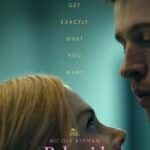
Murder On the Orient Express
In the background of the Thirties, the Art deco and exotic tourism, Hercule Poirot, finds the guilty and the probe with the expertise of the fine mechanics of a crime. Expected in London, with urgency, find accommodation, luxury and comfort on the Orient Express. But an avalanche and a murder interrupted as his small pleasures, the reading of Dickens and the symmetry of the eggs in the morning. Mr. Bouc, the director of the train concerned of the police and of the scandal, asks Poirot to solve the case. Stuck with thirteen passengers, all suspected, the famous detective sudden an investigation that will lead him where not even he had expected.
After remixing Shakespeare with an emphasis and fury, hazardous an incursion in the universe supereroico of Marvel comics, offered a new youth agent Jack Ryan and reread the Cinderella in the Disney live-action, Kenneth Branagh directed his film version of the novel of Agatha Christie (“Murder on the Orient Express”), published in 1934, and already the subject of the adaptation of the cult of Sidney Lumet.
The famous investigation of Hercule Poirot, translated for the screen by Michael Green, is a material-dramatic, compelling, and unusual for the English author who chooses for himself the main role. Armed with a cast plethoric, Branagh off the ticket and you play the stroke. Take the Orient Express, (especially) for him it is like being at the theatre, and attend an era of formidable promises of progress and freedom. When the train is reconciled to far away places, compress the time-dilated space, riconfigurava the city and approached the men. But the Orient Express took never really that role.
Machine for producing myths, where the West was its elsewhere and its double the exotic, was a train antimoderno looking for a East of the mythical and the imaginary. The destination was important, but the first leg of the trip and its essence were the same train. The soul of the adventure, his reason for being. The source of inspiration that is infinite and place conducive to seduction, espionage and, of course, to the murder, the train, the blue and gold of Branagh derails in the snow, playing with the possibilities and the lack of freedom that can take. Reiterating but together bypassing the constriction that forces a train, with its compartments and narrow corridors, the author bets on the outside of the field, shooting from above, from below, from outside. The floor sequence in the station, for example, shows Hercule Poirot to cross the wagon without interruption up to his cabin, revealing with his movement and the duration of the contiguity of the space.








